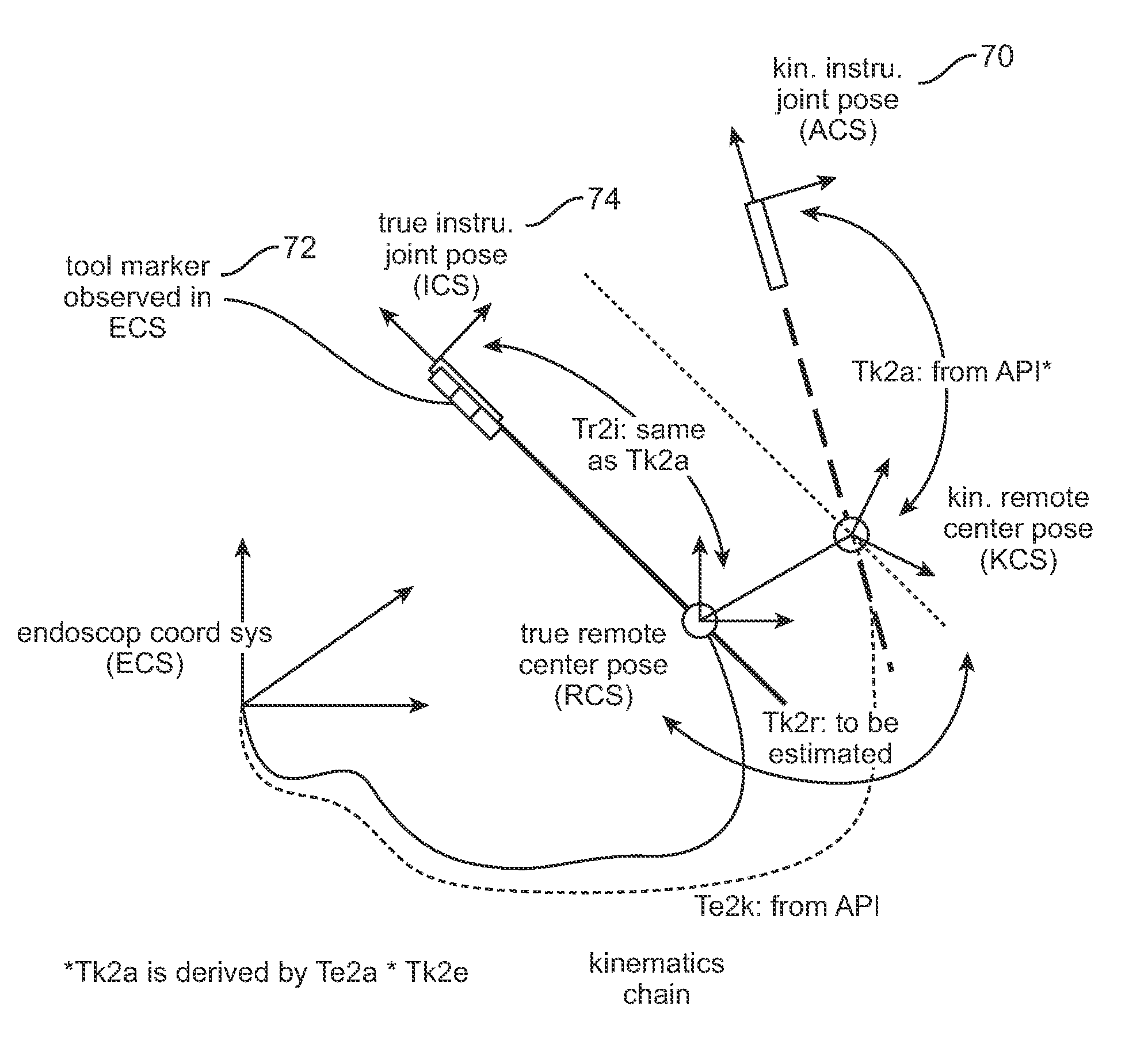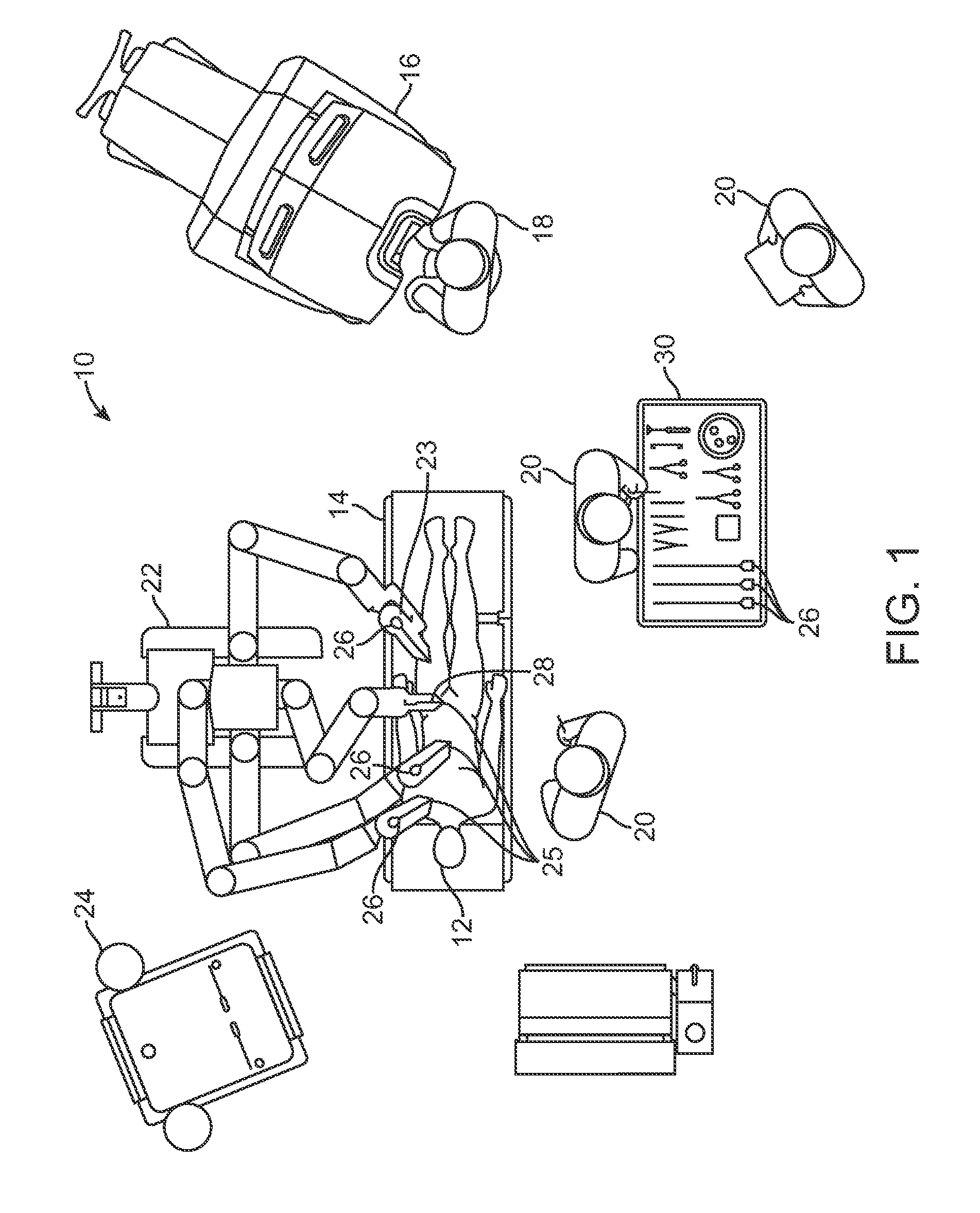Efficient vision and kinematic data fusion for robotic surgical instruments and other applications
a robotic surgical instrument and kinematic data technology, applied in the field of robotic surgical instruments and other applications, can solve the problems of computational difficulties in fusing joint-based and image-based data, and the absolute location and orientation of the end effector determined from this joint-based data may not match the image of the end effector shown to the surgeon at the control console, so as to enhance the overall accuracy, simple rigid transformation, and simple and relatively stable adjustment or bias offset
- Summary
- Abstract
- Description
- Claims
- Application Information
AI Technical Summary
Benefits of technology
Problems solved by technology
Method used
Image
Examples
Embodiment Construction
[0044]The present invention generally provides improved robotic surgical devices, systems, and methods, particularly for telesurgery and other medical robotic applications. Embodiments of the present invention will find their most immediate use for correcting pose information (including position and / or orientation) of robotic surgical tools inserted through minimally invasive apertures to an internal surgical site. While existing robotic telesurgical systems do a good job of establishing and maintaining correspondence between movement of the master input device and movement of the end effector at an internal surgical site (as displayed to the surgeon), still further advantages may be obtained by providing more accurate information regarding the position and / or orientation of the tool (including the end effector, an elongate shaft of the tool extending through a minimally invasive aperture, linkages coupling the shaft to the end effector, and the like).
[0045]While robotic surgical ap...
PUM
 Login to View More
Login to View More Abstract
Description
Claims
Application Information
 Login to View More
Login to View More - R&D
- Intellectual Property
- Life Sciences
- Materials
- Tech Scout
- Unparalleled Data Quality
- Higher Quality Content
- 60% Fewer Hallucinations
Browse by: Latest US Patents, China's latest patents, Technical Efficacy Thesaurus, Application Domain, Technology Topic, Popular Technical Reports.
© 2025 PatSnap. All rights reserved.Legal|Privacy policy|Modern Slavery Act Transparency Statement|Sitemap|About US| Contact US: help@patsnap.com



